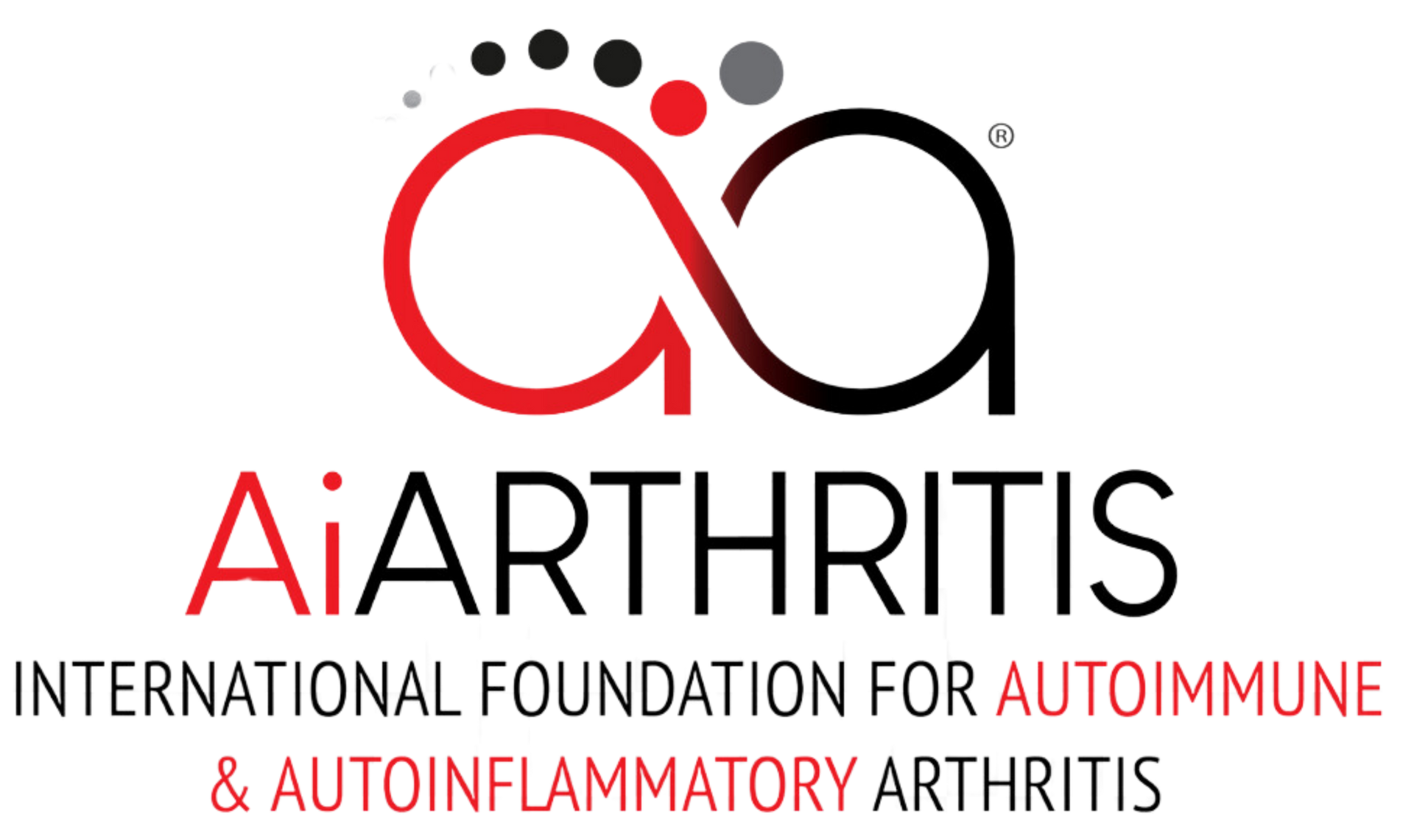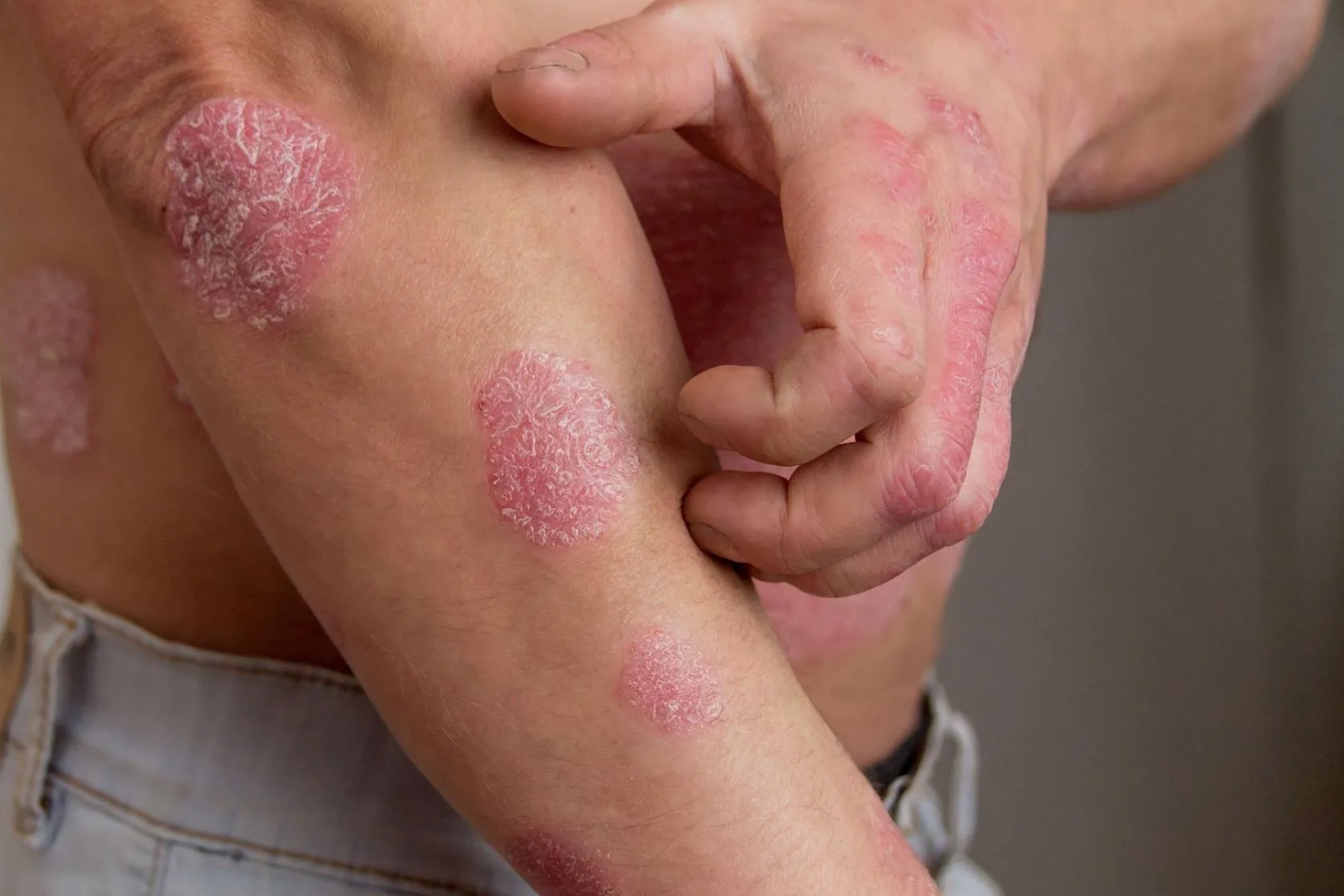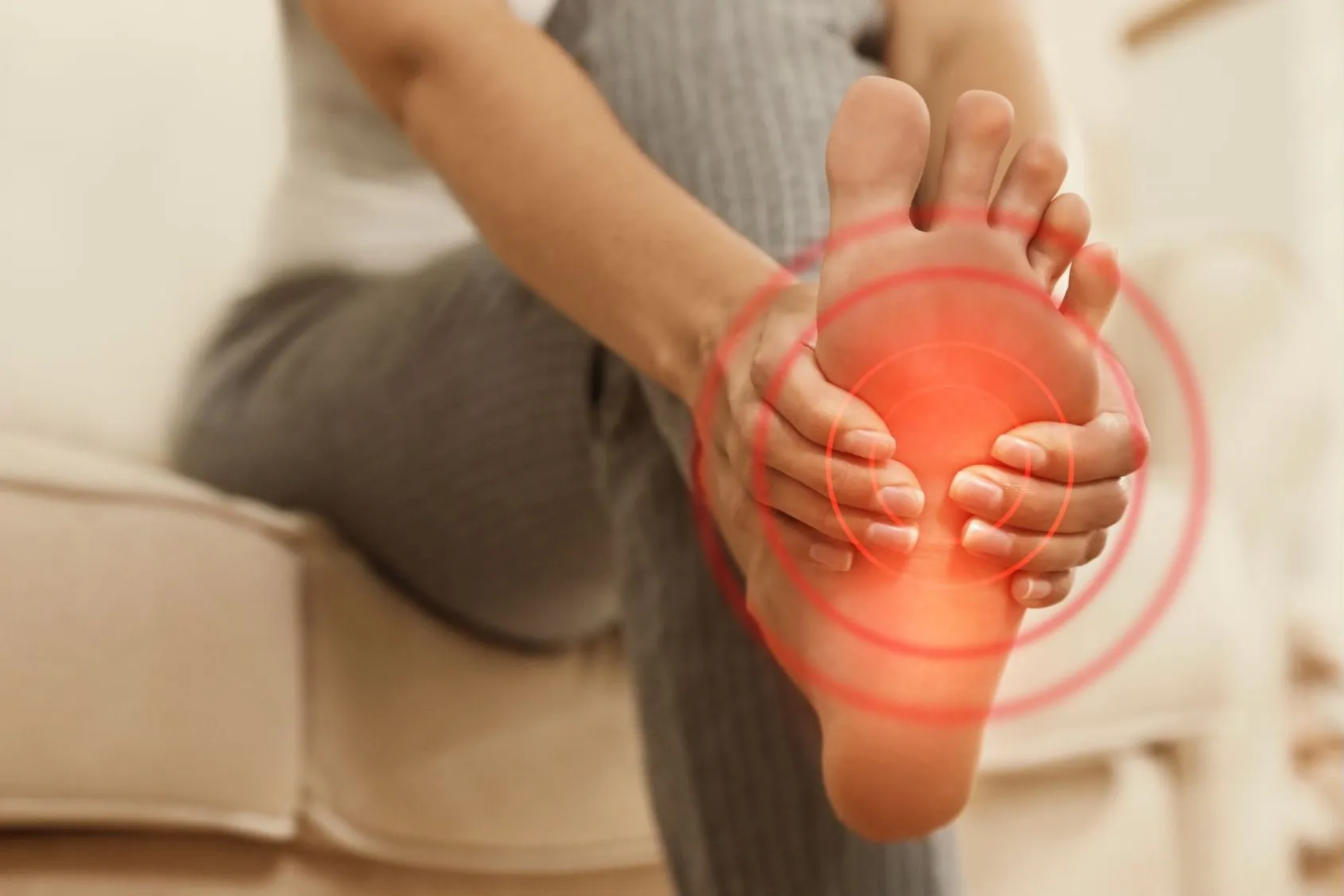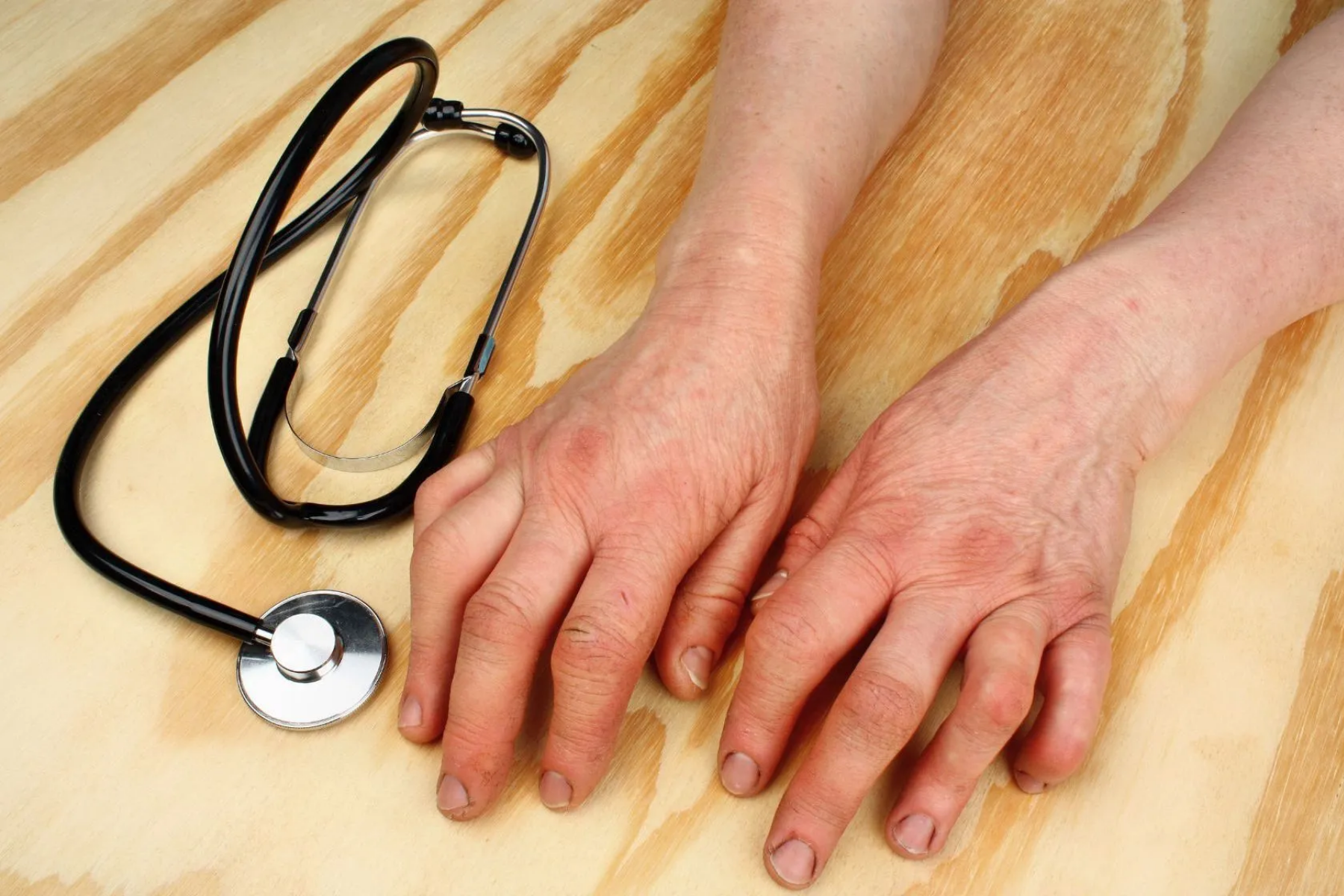Psoriatic Arthritis (PsA)
How to pronounce it: Psoriatic - So-ri-at-ic Arthritis - ar-thry-tus
AiArthritis defines Psoriatic Arthritis as:
Psoriatic arthritis (PsA) is a chronic inflammatory disease. It affects the joints and often causes enthesitis (inflammation where tendons and ligaments attach to bones). PsA can also impact the skin and eyes. While most people with PsA have a psoriasis rash, it can be hidden (like on the scalp) or may not show up for years.
Symptoms & Characteristics
Common in All AiArthritis Diseases
Flares: Periods of worsening symptoms are called flares. A flare can last for hours, days, weeks, or months.
Physical Activity: Condition improves with activity and exercise and worsens with rest.
Comorbidities: When inflammation is left uncontrolled due to lack of proper treatment, comorbidities can develop. 70% of patients with chronic, lifelong disease will develop comorbidities, including dual or triple diagnoses.
Family History:
Autoimmune diseases often run in families, indicating a potential genetic predisposition where that gene can cause disease. Autoinflammatory diseases can occur multiple times in a family, but is based off of genetic mutation. It is not a gene that causes the disease— but a mutation on the gene that can cause the disease which can then be passed on to the next generation.
"Auto" Symptoms
Fatigue: Severe fatigue or exhaustion that may not be helped by caffeine/stimulants and can happen even after a long period of rest.
Cognitive Dysfunction: Brain fog or periods of time where thinking gets clouded and it becomes difficult to concentrate.
Flu-like symptoms: Without having the flu- nausea, muscle weakness, and general malaise.
Fever: Typically low grade in autoimmune (with exception of juvenile idiopathic arthritis) and higher grade in autoinflammatory (% strongly varies per disease).
Reference: Early Symptoms of AiArthritis Study, AiArthritis, 2019.
Inflammatory Arthritis Symptoms
Stiffness: Severe stiffness in one or more joints, especially in the morning or after sitting for long periods of time.
Joint Pain: Episodes of joint pain that may last for hours, days, or even weeks, that can appear and disappear suddenly. Often described as “jumping pain” into different locations.
Typically the joint pain will coincide with one or more “Auto” symptoms and start and stop suddenly - for no apparent reason (which is called a "flare"). Some people will experience all of the above symptoms, others only a few.
If you have any of the arthritis features, and at least one of the “Auto” features, please consult your physician about a referral to a specialist.
Symptoms Often Associated with Psoriatic Arthritis
- Dactylitis: Swelling of an entire finger or toe, giving it a “sausage-like” appearance. This can make it painful and hard to bend.
- Psoriatic Skin Lesions: Red, scaly patches on the skin that can itch and be painful (they are not contagious).
- Enthesitis: Inflammation where tendons and ligaments connect to bones, often seen in the heels, legs, or chest (costochondritis).
- Nail Changes: Small pits, white spots, cracking, or the nail separating from the nail bed.
- Back Pain and Stiffness: Some people experience pain and stiffness in the lower back, neck, or upper back (spondylitis).
Diagnosing Psoriatic Arthritis
There’s no single test for PsA. Rheumatologists will use a combination of physical exams, blood tests, imaging (like x-rays), and family history. During the exam, they will:
- Look for nail pits or skin lesions related to psoriasis.
- Check for swollen or sore joints.
- Screen for enthesitis (inflammation where tendons connect to bones).
Blood tests will check for C-reactive protein (CRP) and rheumatoid factor (RF). Most people with PsA do not have a positive RF. If RF is positive, doctors may consider a diagnosis of Rheumatoid Arthritis (RA) instead.
Imaging tests, such as x-rays, often focus on the hands and feet to look for damage. PsA can cause unique joint damage not seen in other types of AiArthritis diseases. However, x-rays may not show early signs, so MRIs or other imaging might be needed.
Doctors will also check if symptoms have lasted more than 6 weeks and look for patterns that differentiate PsA from other types of arthritis.
- More than one joint being affected
- Chronic symptoms lasting over 6 weeks
- Swelling, redness, or warmth in the joints (not always present)
- Other symptoms that can distinguish RA from osteoarthritis
Blood tests can show inflammation (ESR and CRP) or a positive Rheumatoid Factor (RF+), but these are not required for a diagnosis. Many people with RA do not have these markers in their blood.
To help with diagnosis, doctors may use a points system from the American College of Rheumatology (ACR) and European Alliance of Associations for Rheumatology (EULAR). This system assigns points based on your test results and symptoms to determine if you have psoriatic arthritis.
Psoriatic Arthritis Treatment Options
Treatment OptionsTreatments are tailored to each individual's disease, but visit our Treatment Options page to learn more about the different types of treatments that are used for Psoriatic Arthritis.
What Fellow PsA Patients Want You to Know
Submit YOUR Advice- It may be confusing to get a Psoriatic Arthritis diagnosis and NOT have psoriasis, but it could happen. It’s also possible to have psoriasis and no one asks if you have other symptoms that could lead to a PsA diagnosis.
- Nail changes are visible. If you paint your nails or wear fake nails, try not doing this for awhile to see if you have nail changes (like ridging, breaking/cracking).
- Even though it's called Psoriatic Arthritis, and often joints are part of it, enthesitis - or the tendons where it connects to your bones - are usually involved. This can be in the feet (often heels), chest (called costochondritis), spine and more. with dandruff.
- Keep an eye out for small patches of psoriasis that may be hidden (like scalp), which could be confused with dandruff.
Interesting Facts about Psoriatic Arthritis
- Psoriatic arthritis wasn’t widely recognized until the mid-20th century. Though psoriasis has been known since ancient times, its connection to arthritis wasn’t fully understood until researchers began to differentiate it from other forms of arthritis, like rheumatoid arthritis.
- Psoriatic arthritis is named for its association with psoriasis, a skin condition that causes red, scaly patches. The term “psoriatic” refers to the skin symptoms, while “arthritis” refers to the inflammation of the joints.
- 30-33% of people with psoriasis develop psoriatic arthritis
Psoriatic Arthritis Awareness Days/Months
- World Autoimmune and Autoinflammatory Arthritis Day - May 20th
- Autoimmune Awareness Month - March
- Psoriatic Arthritis Action Month - May
- Arthritis Awareness Week (UK) - May
- Arthritis Awareness Month (US) - May
- Psoriasis Awareness Month - August
- Arthritis Awareness Month (Canada) - September
- World Arthritis Day - October 12th
- World Psoriasis Day - October 29th
- Rheumatic Disease Awareness Month - September
- Pain Awareness Month - September
- Chronic Disease Awareness Day - July 10th
- Invisible Disabilities Week - 3rd full week of October
Other Psoriatic Arthritis Resources




